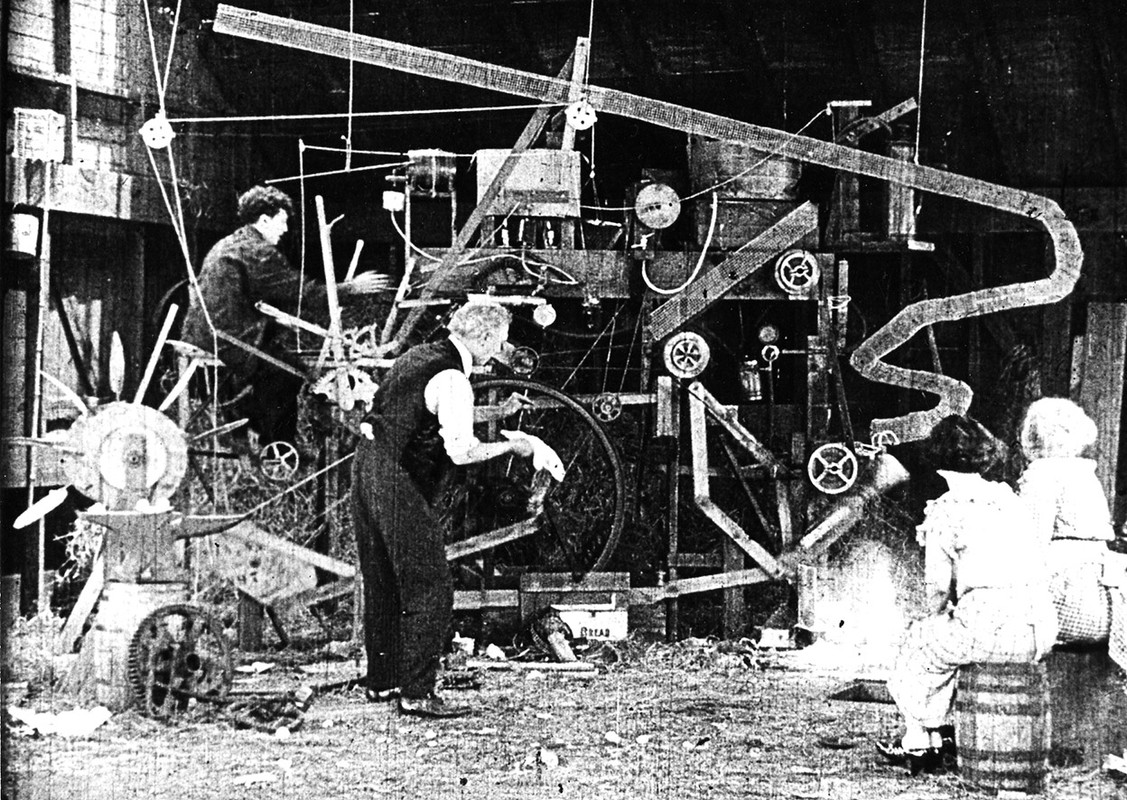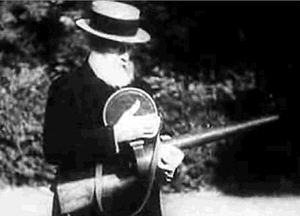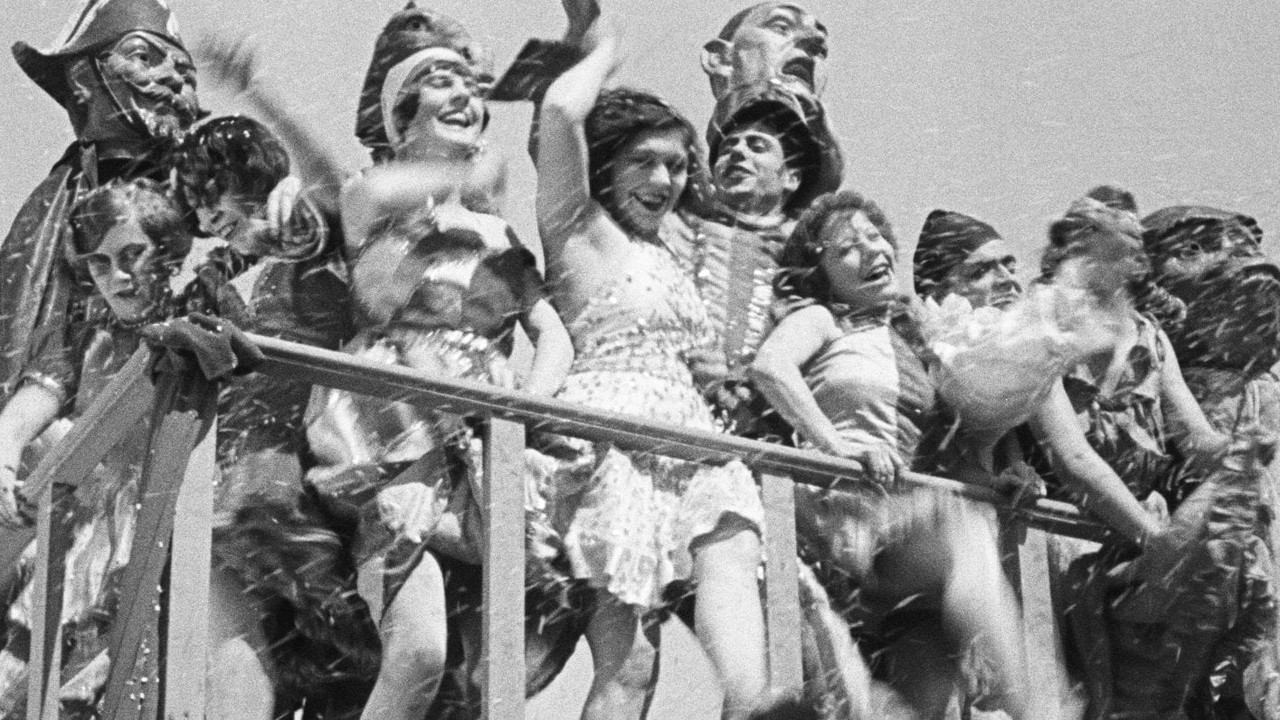“… as we enjoy great advantages from the inventions of others, we should be glad of an opportunity to serve others by any invention of ours; and this we should do freely and generously.”Egged On (Charles R. Bowers, Harold L. Muller + Ted Sears, 1926)
Jan
17
inventions

Charley working his Rube Goldberger-esque egg-rubberizing contraption.
An invention for Benjamin Franklin's birthday. Inventor Charley (Charles R. Bowers) comes up with an ingenious method to make eggs break-proof for transport by rubberizing them.
– Benjamin Franklin in his autobiography
Bowers was an almost-forgotten silent era comedian, filmmaker, and animator. In more recent years, his groundbreaking stop-motion comedy has found a new, well-deserved, interest.
shortfilm
“Art and science encounter each other when they seek exactitude.”Escrime [Fencing] (Étienne-Jules Marey, 1890)
Jan
4
revolvers


Footage of Marey at work. Note the mobility of his invention. (via).
A revolver to commemorate Samuel Colt's sale of 1 000 revolvers to butcher Captain Samuel Walker in 1847.
– Étienne-Jules Marey
However, where there is bloodshed, there can be art. Scientist Étienne-Jules Marey studied movement, and further adapted an existing revolver-style camera gun invented by astronomer Jules Janssen in 1874. The revolution in Marey's invention was not in the least in its mobility. Unlike Muybridge, whose locomotion experiments required a huge, cumbersome setup, Marey could strap on his “gun”, and shoot moving footage while following his target around. His chronophotograph Escrime can be considered Marey's first successfully captured moving footage.
“In this film, by showing certain basic aspects of a city, a way of life is put on trial… the last gasps of a society so lost in its escapism that it sickens you and makes you sympathetic to a revolutionary solution.”À propos de Nice – point de vue documenté [À propos de Nice] (Boris Kaufman + Jean Vigo, 1930)
Jan
1
New Year's Day

Exuberant prostitutes, Jean Vigo (5th from the left), and some who appear to be men in drag, dance on a landing with confetti all around them. In the moving footage they can be seen high-kicking with increased vulgarity, the camera posed below them. DP: Boris Kaufman.
Confetti for New Year's Day.
– Jean Vigo in his manifesto Vers un cinéma social
X2000 (François Ozon, 1998)
Jan
1
2000

A young, naked man holding a drink observes two men asleep in a sleeping bag on the floor. On the wall behind them the text “2000” spelled out with tinsel garlands. DP: Pierre Stoeber.
Cali: de película (Luis Ospina, 1973)
Dec
26
Feria de Cali

A child hands a man in indigenous garb a small liquor bottle during the cabalgata, the parade of horseback riders. The man's horse is painted to resemble a zebra. DP: Carlos Mayolo.
A parade for Feria de Cali, Columbia.
“I hate to see the evening' sun go down
I hate to see the evening' sun go down
It makes me think I'm on my last go 'round Feeling' tomorrow like I feel today
Feeling' tomorrow like I feel today
I'll pack my grip and make my getaway” Saint Louis woman with her diamond rings
Pulls that man around by her apron strings
Wasn't for powder and the store-bought hair
The man I love wouldn't go nowhere, nowhere I got them Saint Louis Blues; just as blue as I can be
He's got a heart like a rock cast in the sea
Or else he wouldn't have gone so far from me”St. Louis Blues (Dudley Murphy, 1929)
Dec
20
Walter “Wolfman” Washington – 1943

Bessie “the Empress of Blues” Smith, singing her blues away. DP: Walter Strenge .
Featuring rhythm and blues, funk or blues, for Walter “Wolfman” Washington's birthday (1943)
– Bessie Smith, St. Louis Blues (W. C. Handy)
行者 [Jingang Jing / Walker] (Tsai Ming-liang, 2012)
Dec
8
बोधि

The monk (Kang-sheng Lee) walking Hong Kong. DP: Tsai Ming-liang.
Sioux Ghost Dance (William K.L. Dickson + William Heise 1894)
Dec
1
Hornbill Festival

A Sioux troupe – these particular people were part of Buffalo Bill’s Wild West show – perform a Ghost Dance in #ThomasEdison's Black Maria studio in New Jersey. DP: William Heise.
Indigenous dance for Hornbill Festival, Nagaland.
The End (Christopher Maclaine, 1953)
Nov
13
ice cream

A man suggestively licks an ice cream cone. DP: Jordan Belson.
